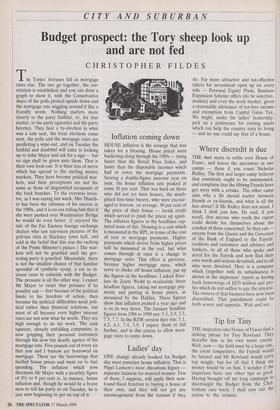Inflation coming down
HOUSE inflation is the scourge that was taken for a blessing. House price's went bucketing along through the 1980s — rising faster than the Retail Price Index, and faster than the disposable incomes which had to cover the mortgage payments. Scoring a double-figure increase year on year, the house inflation rate peaked at some 30 per cent. That was hard on those who did not yet have houses, the much- pitied first-time buyers, who were encour- aged to borrow, on average, 90 per cent of the price of their house — lavish credit which served to push the prices up again. The inflation figures in the headlines cap- tured none of this. Housing is a cost which is measured in the RPI, in terms of the cost of rent or mortgage payments. Higher payments which derive from higher prices will be measured in the end, but what comes through at once is a change in mortgage rates. That effect is perverse, because higher mortgage rates, which serve to choke off house inflation, put up the figures in the headlines. I asked Barc- lays de Zoete Wedd to recalculate those headline figures, taking out mortgage pay- ments and putting in house prices, as measured by the Halifax. These figures show that inflation peaked a year ago and is on its way down. The January headline figures from 1986 to 1990 run: 5.5, 3.9, 3.3, 7.5, 7.7. In the BZW version they run: 5.1, 4.2, 4.5, 7.4, 5.9. I expect them to fall further, and in due course to allow mort- gage rates to come down.


























































 Previous page
Previous page